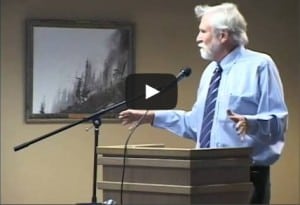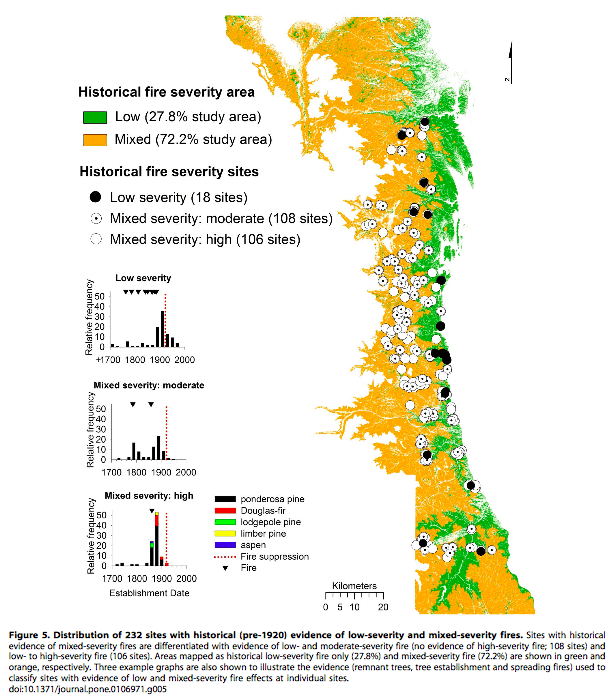… for the first time in 14 years, says this article, which includes a variety of viewpoints, including our fellow NCFP blogger Matthew Koehler.
Uncategorized
Lawmakers vent to feds, assert forest fire inaction
The article, “Lawmakers vent to feds, assert forest fire inaction,” might have been titled “Lawmakers vent to feds, assert Congressional inaction.”
“If you are going to be the landowner, the landlord, we look to you to for the responsibility in taking the lead,” said Rep. Roger Barrus, R-Centerville.
I understand that view, but the main problem is that the USFS and BLM are hamstrung by protracted environmental planning and collaboration processes, too-frequent lawsuits or the fear of them, and inadequate funding or misplaced funding priorities.
Equal Access to Justice Act: 200+ Lawsuits filed nationwide by AWR in 25 years
According to this article, “3 Montana environmental groups file 200 lawsuits against federal agencies,” in the Ravalli Republic, “The Alliance for the Wild Rockies, the Montana Ecosystems Defense Council and the Native Ecosystems Council are the three conservation groups that have been the most litigious in recent years [since 1989] in the Helena region. The groups have been involved in more than 200 court cases nationwide as plaintiffs or co-plaintiffs against federal agencies like the Forest Service, Bureau of Land Management and U.S. Fish and Wildlife Service.”
UPDATE NOTE: I just edited the title of this post because the original title used by Steve Wilent was factually incorrect. Steve’s original title was “Equal Access to Justice Act: 200+ Lawsuits filed in Montana.” That title was clearly factually incorrect because as the article clearly points out (and ironically as Steve’s post lated point out): “The groups have been involved in more than 200 court cases nationwide as plaintiffs or co-plaintiffs against federal agencies like the Forest Service, Bureau of Land Management and U.S. Fish and Wildlife Service.”
Garrity: Taxpayer subsidized logging make no sense
An excerpt from an op-ed by our old friend Michael Garrity, executive director of the Alliance for the Wild Rockies, entitled “Taxpayer subsidized logging make no sense“:
“The Gazette found the Forest Service in Montana generated $5.4 million in revenue 2013, of which $4.1 million came from timber sales. But here’s the rub: that amounts to only about 2.2 percent of the $179 million the Forest Service spent in Montana in 2013 on discretionary projects, timber sale preparation, salaries, and transportation. Maintaining campgrounds and trails and cleaning outhouses represents a small portion of the Forest Service budget in Montana and that was mostly off-set by the $1.3 million in revenue the agency collected from recreation fees in 2013. In other words, the Forest Service in Montana spent $179 million, mostly on timber sales, in Montana but only received $4.1 million in revenue from these sales. They lost millions on logging.”
How much of the “subsidy” is spent on the additional planning to avoid lawsuits by groups like Garrity’s, and defending itself from same?
Star Wars Comes to the Olympics
Olympic Mountains, that is.
The Navy wants a Forest Service special-use permit to deploy mobile electromagnetic radiation emitting vehicles on Washington’s Olympic National Forest. To the Forest Service’s credit, it has extended the public comment period (until tomorrow) to accommodate concerns of local folks who don’t read the Seattle-area newspapers where the scoping notices were published originally.
As is the case with most special-use permit applications, the applicant (Navy) hired a consultant to write the environmental assessment. The Forest Service now must decide whether to adopt the EA as its own and issue the permit. In this case, that would be a dumb idea for the reasons explained in FSEEE’s comments.
In a nutshell, the consultant ignored the Olympic’s Forest Plan (written in 1990) because the Plan bars issuing special-use permits for any use that can be accommodated on private land. Thankfully, NEPA requires a public comment process, as based on conversations I had with Olympic staff, they were quite unaware of this Plan standard.
VIDEO: Robert H. Nelson talk in Wallace, Idaho
 Readers of NCFP may be interested in the video of the talk presented by Robert H. Nelson to the “Not Without a Fight!” Coalition’s conference held in Wallace on September 24th.
Readers of NCFP may be interested in the video of the talk presented by Robert H. Nelson to the “Not Without a Fight!” Coalition’s conference held in Wallace on September 24th.
Here’s are the introductory comments I offered on the video at the NWAF! blog:
Editor’s note: The NWAF! blog will be posting some of the presentations offered at our “September Conference” over the coming days and weeks. We begin with Robert H. Nelson’s keynote talk, which was titled “The ecosystem management disaster.” Nelson’s presentation reviewed four (let’s call them) “governing images” guiding Congress’s public lands policies over the history of the American West, all destined for failure. He also offered a brief account of his “Charter Forests” model for reforming forest management in the U.S. If a personal word may be permitted, it was very edifying and a great pleasure to see this distinguished scholar move so fluidly and lucidly through this uniquely American historical story. The video runs just under 70 minutes. Enjoy!
— Ron
OP-Ed on Fire Funding by 3 Former USFS Chiefs
LA Times essay by Dale N. Bosworth, Jack Ward Thomas, and Michael Dombeck.
An “archaic method of funding fire suppression is wreaking havoc with Forest Service budgets, and it is also making it likely we’ll see more and costlier fires.”
And: “Thankfully, a sensible solution to this problem exists in the Wildfire Disaster Funding Act. This proposed legislation would finally treat America’s most catastrophic wildfires in the way it treats other natural disasters, meaning that funds required to fight severe fires would be drawn from a federal emergency account rather than borrowed from other Forest Service programs.”
Legalization Does Not Stop Illegal National Forest Pot-Growing
Thanks to Bob Berwyn for this one and the nice fall photo, here’s the link:
FRISCO —Colorado’s legalization of marijuana may mark a new era on the state level, but some things haven’t changed. Each year, profiteering outlaws try to use public lands to grow and harvest marijuana, which remains illegal under federal laws.
This week, law enforcement officers with the U.S. Forest Service eradicated a major pot farm on national forest lands near Ruedi Reservoir after it was reported to the Forest Service by the public. After uprooting more than 2,600 mature plants, Forest Service officials estimated the value of the plants about $6 to $8 million based on the average value of $2,500 per pound.
Since 2009, 34 illegal marijuana grow sites and more than 65,000 marijuana plants have been eradicated from national forests in Colorado, but the agency emphasized that most national forest lands are safe and free of illegal marijuana activities.
Each plant is estimated to yield 1 pound of processed material. Crews removed the marijuana plants, dismantled the irrigation system and removed items left in a make-shift camp. The marijuana plants were pulled up and removed from the area. No arrests have been made and the case remains under investigation.
You Got Mail
Click on the image of the envelope above that arrived recently in FSEEE’s mailbox and take a close look. Any idea what it might be? A credit card solicitation, perhaps? Some other type of junk mail?
Nope. The envelope contained an official letter soliciting our views regarding the Kisatchie National Forest’s plans for prescribed burning. We get notices like this all the time; one of our jobs at FSEEE is to keep an eye on what the Forest Service is up to across the national forest system.
Our concern is this: How would a member of the general public who is interested in a project on national forest lands have any idea what’s inside? There is no clue that the letter is from the Forest Service. Not knowing what “Solv” is, it seems likely that many would toss the letter into the round file, unopened. Solv, it turns out, is a consulting company based in McLean, Virginia, that counts among its clients a number of government agencies.
The Forest Service, of course, has long contracted out tasks it is required to do. Think national forest campgrounds, for example—the fireside chat by a friendly ranger is a thing of the past. For-profit companies run most Forest Service campgrounds these days.
A key part of the Forest Service’s mission is to keep the public informed about how it manages our public lands—it is, in fact, legally bound to issue notices about its projects to members of the public who ask for the information. It would help if the agency put its notices in envelopes that say “Forest Service.”
Science: Recent Front Range fires not fundamentally different from similar events that occurred historically under extreme weather conditions.

A new scientific study titled Historical, Observed, and Modeled Wildfire Severity in Montane Forests of the Colorado Front Range should be of interest to blog readers. The study is by Rosemary L. Sherriff, Rutherford V. Platt, Thomas T. Veblen, Tania L. Schoennagel, Meredith H. Gartner. View the full study here.
Abstract
Large recent fires in the western U.S. have contributed to a perception that fire exclusion has caused an unprecedented occurrence of uncharacteristically severe fires, particularly in lower elevation dry pine forests. In the absence of long-term fire severity records, it is unknown how short-term trends compare to fire severity prior to 20th century fire exclusion. This study compares historical (i.e. pre-1920) fire severity with observed modern fire severity and modeled potential fire behavior across 564,413 ha of montane forests of the Colorado Front Range. We used forest structure and tree-ring fire history to characterize fire severity at 232 sites and then modeled historical fire-severity across the entire study area using biophysical variables. Eighteen (7.8%) sites were characterized by low-severity fires and 214 (92.2%) by mixed-severity fires (i.e. including moderate- or high-severity fires). Difference in area of historical versus observed low-severity fire within nine recent (post- 1999) large fire perimeters was greatest in lower montane forests. Only 16% of the study area recorded a shift from historical low severity to a higher potential for crown fire today. An historical fire regime of more frequent and low-severity fires at low elevations (,2260 m) supports a convergence of management goals of ecological restoration and fire hazard mitigation in those habitats. In contrast, at higher elevations mixed-severity fires were predominant historically and continue to be so today. Thinning treatments at higher elevations of the montane zone will not return the fire regime to an historic low-severity regime, and are of questionable effectiveness in preventing severe wildfires. Based on present-day fuels, predicted fire behavior under extreme fire weather continues to indicate a mixed-severity fire regime throughout most of the montane forest zone. Recent large wildfires in the Front Range are not fundamentally different from similar events that occurred historically under extreme weather conditions.


